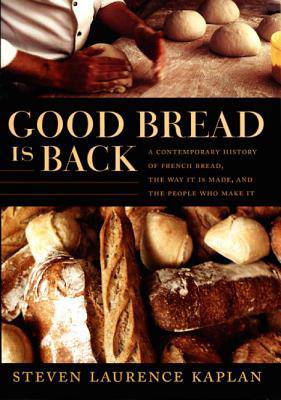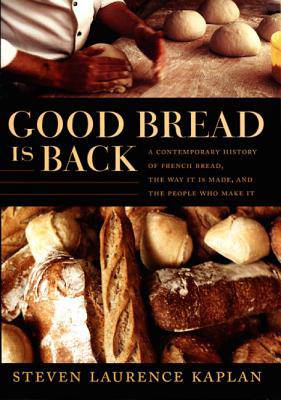
- Retrait gratuit dans votre magasin Club
- 7.000.000 titres dans notre catalogue
- Payer en toute sécurité
- Toujours un magasin près de chez vous
- Retrait gratuit dans votre magasin Club
- 7.000.000 titres dans notre catalogue
- Payer en toute sécurité
- Toujours un magasin près de chez vous
Good Bread Is Back
A Contemporary History of French Bread, the Way It Is Made, and the People Who Make It
Steven Laurence KaplanDescription
Kaplan sets the stage for the comeback of good bread by describing how, while bread comprised the bulk of the French diet during the eighteenth century, by the twentieth, per capita consumption had dropped off precipitously. This was largely due to social and economic modernization and the availability of a wider choice of foods. But part of the problem was that the bread did not taste good. Centuries-old artisanal breadmaking techniques were giving way to conveyor belts that churned out flavorless fluff. In a culture in which bread is sacrosanct, bad bread was more than a gastronomical disappointment; it was a threat to France's sense of itself. With a nudge from the millers (who make the flour) and assistance from the government, bakers rallied, reclaiming their reputations as artisans by marketing their traditionally made loaves as the authentic French bread.
By the mid-1990s, bread officially designated as "bread of the French tradition"--bread made without additives or freezing--was in demand throughout Paris. What makes this artisanal bread good? Kaplan explains, meticulously describing the ideal crust and crumb (interior), mouth feel, aroma, and taste. He discusses the breadmaking process in extraordinary detail, from the ingredients to the kneading, shaping, and baking, and even to the sound bread should make when it comes out of the oven. He offers a system for assessing bread's quality and a language for discussing its attributes. A historian and a connoisseur, Kaplan does more than tell the story of the revival of good bread in France. He makes the reader see, smell, taste, feel, and even hear why it is so very wonderful that good bread is back.
Spécifications
Parties prenantes
- Auteur(s) :
- Editeur:
Contenu
- Nombre de pages :
- 384
- Langue:
- Anglais
Caractéristiques
- EAN:
- 9780822338338
- Date de parution :
- 20-12-06
- Format:
- Livre relié
- Format numérique:
- Genaaid
- Dimensions :
- 166 mm x 242 mm
- Poids :
- 716 g







